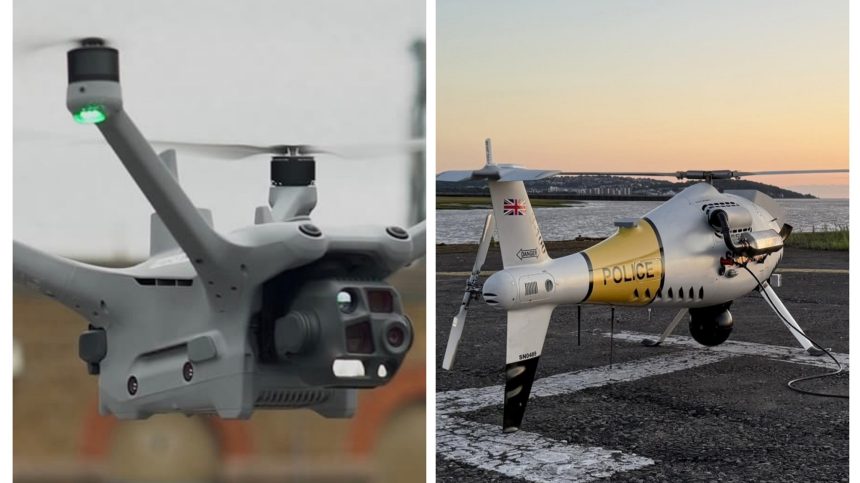The UK’s Metropolitan Police Service is deploying UAS to London in a new trial hoping to provide police officers with a new intelligence gathering capability.
The United Kingdom’s Metropolitan Police Service (MPS) has unveiled their Drone as First Responder (DFR) program, which aims to deploy a UAS to arrive at the scene of an incident to increase the situational awareness of officers arriving at the location. Response times from deploying officers to 999 calls (UK’s equivalent of the US 911) averages around eight minutes for high priority incidents where there is a present danger to life, a serious threat of violence, serious injury, or serious property damage.
Drone as First Responder
The DFR program aims to have a drone deployed to one of these calls within two minutes, greatly increasing the MPS’ ability to understand the scene they are responding to.
Our new drones can deploy to calls in London instantly.
Officers will have a live-time view of a situation before they arrive to help make precise and better-informed decisions to locate suspects and keep communities safe.
Faster awareness, smarter responses, safer… pic.twitter.com/ZZZmpNLIE0
— Metropolitan Police (@metpoliceuk) October 23, 2025
The DFR program seemingly utilises an off the shelf variant of the DJI Matrice 4TD Thermal Drone and an accompanying Dock 3, which is situated onto the roof of Islington Police station.
The Dock 3 acts as the charging bay for the UAS, where it can be stored when not in use, protected by the insulating cover that shields the UAS from the elements. When required the cover will drop out of the way allowing for the immediate launch of the UAS which will then fly straight to the scene of an incident.
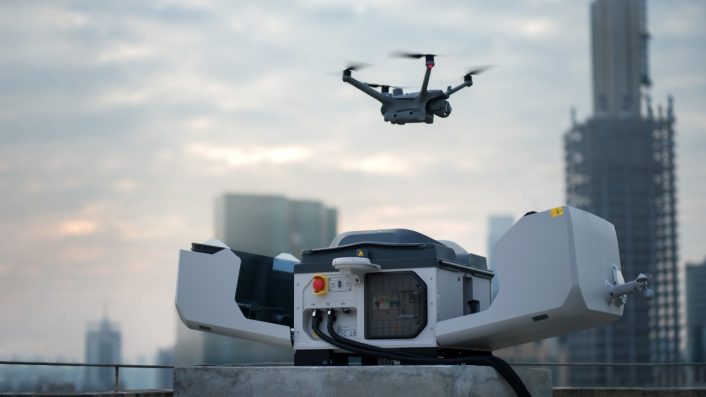
These UAS are controlled from a command station that is kept within the police station itself, where live feeds are transmitted to the controller to be recorded for evidential purposes. From here, intelligence gained from the UAS can be immediately provided to officers on the ground both before they arrive and whilst they are at the scene, where the UAS can then monitor the officer’s response.
Recordings of the live feed will be made, whereby it can then be used for evidential purposes if the case requires it. If this is not the case, the recording will be deleted after 28 days.
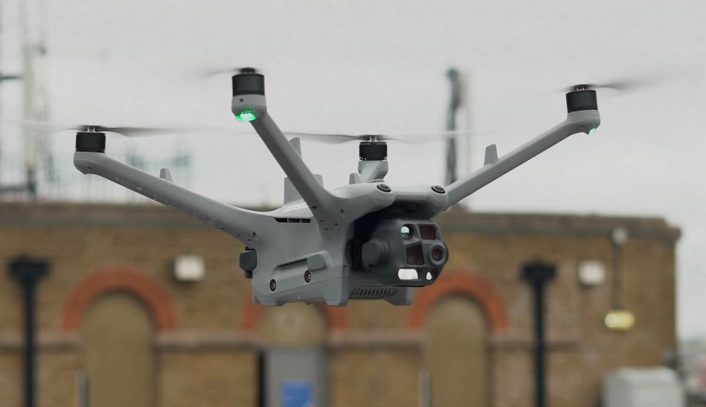
The DFR program is the first of its type in the UK and is currently centred in the London borough of Islington, although there are plans to expand the West End and Hyde Park by the end of 2025. If successful, this program could be rolled out across the whole of London, and even begin to shape Police UAS operations across the whole country, although this is still a long way off.
The current deployment of UAS follows a trial conducted in 2024 by the Hampshire and Isle of Wight Constabulary, as well as the Thames Valley Police, where DFR was used to aid with policing the Isle of Wight Festival.
UAS from Chinese company DJI have seen use outside of the world of policing, with thousands seen operating on both sides of the Russo-Ukrainian war. In response to this, DJI cut off sales to both Ukraine and Russia in a reported effort to stop the weaponisation of their drones which are meant for civilian purposes and not the pursuit of conflict.
Additionally, DJI introduced technical restrictions that hoped to halt their drones being used in the conflict, however both sides have reportedly found ways around this. Despite the prohibition, DJI drones have continued to make their way to the warzone in the years since, highlighting how little control DJI and China have over their products with their end user.
War in Ukraine 🇺🇦🇷🇺 Ukrainian Mavic 3 drone hoovering in they sky tracked and quickly destroyed the Russian soldiers with its grenades. Location is east of the village of Torske, Donetsk region #Ukraina #Russia #UkraineWar pic.twitter.com/SpRIOtcN78
— Skënderbej_ (@AncientAlien01) October 13, 2024
For those worried about the Chinese spying scandal in the UK, and the idea of British police using Chinese-made drones for the purpose of policing, the failure to halt their use in the Russo-Ukrainian War highlights the independence of the MPS and other police forces in using this technology. At the end of the day, it is just a product that can be easily adapted for the needs of the police.
However, British policing is a world away from the requirements of a warzone. Assistant Commissioner Laurence Taylor, the national lead for drones, had this to say about the DFR program:
“This isn’t surveillance. This is to support policing operations on the ground.
[UAS can respond to] a variety of incidents, including searching for missing people, tracing a suspect, or arriving quicker to capture evidence at the scene of an incident.
We are building a Met that is more precise and efficient than ever before, and this new technology gives us a vital new tool to tackle crime in the capital.”
Traditionally, the MPS and other forces were reliant on a limited number of helicopters carrying thermal cameras, used to search for missing people and fleeing suspects. However, this came at the cost of using an expensive asset for long periods of time over residential areas, creating a lot of noise disturbance.
With the Matrice 4TD’s in-built thermal camera, this job can be done much more affordably and far quieter, allowing for the efficient use of resources in the pursuit of saving people’s lives.
Watch the moment we located and pursued a suspect responsible for multiple robberies across Hertfordshire. After jumping over a wall in an attempt to get away, he was quickly arrested by ground units.https://t.co/T0pvXRrvEDhttps://t.co/FBgndjiHOa pic.twitter.com/oGoF0dfR0F
— NPAS South East Region (@NPASSouthEast) September 10, 2025
However, the deployment of drones in UK policing has sparked the ire of some organisations including Big Brother Watch, due to fears around the lack of safeguards regarding what they have described as “intrusive technology.” The deployment of DFR does highlight how quickly drone technology has advanced with very little existing legislation in place to control their use around the UK.
UK Police UAS: A History
UAS have been in operation in the UK since the mid 2010s, mostly as proof-of-concept systems with zero standardisation throughout the UK. These forces mostly utilised UAS in response to missing person searches, crime scene photography, and major road traffic collisions, however they were extremely limited in their scale, with only a handful available per police force.
It wasn’t until 2015 that the first dedicated drone unit was set up by the Devon and Cornwall Police in association with the Dorset Police. They introduced a dedicated unit with three full time staff members whose sole position was the handling of a number of DJI Inspire 01 UAS.

These UAS were used to complement helicopter operations performed by the UK’s National Air Policing Service (NPAS), providing Devon, Cornwall and Dorset a limited airborne surveillance capability that was independent of NPAS. It was hoped that, by 2018, 40 officers would have completed their Civil Aviation Authority training allowing for an expansion of the drone program to 18 drones.
Unlike the DFR program, these drones were controlled by officers on the ground with line of sight maintained at all times to maintain connection to the operator and prevent accidents. Whilst a useful capability, the Inspire 01 UAS only had an 18-minute endurance and so frequent battery changes were necessary for sustained operations.
Thanks to advances in drone technology and the increase in the reliability and range of small UAS, this is starting to be less of a concern, hence allowing the DFR program to come to fruition.
The Police Scotland Helicopter tipped a blade to the passing HMS Cardiff this morning as she is taken to open waters for testing. An amazing piece of engineering. @RoyalNavy #PoliceScotlandAirSupportUnit #HMSCardiff pic.twitter.com/lFhID5udFy
— Police Scotland Air Unit (@PSOSAir) August 30, 2024
These drone teams were copied all over the UK with most of the country’s police forces establishing similar units to perform the same role. Police Scotland, in particular, poses an interesting use case for UAS as they have their own helicopter unit that is not attached to NPAS. This means that they only have two Airbus H135 helicopters for the whole of Scotland which does not provide great coverage for the country’s police force.
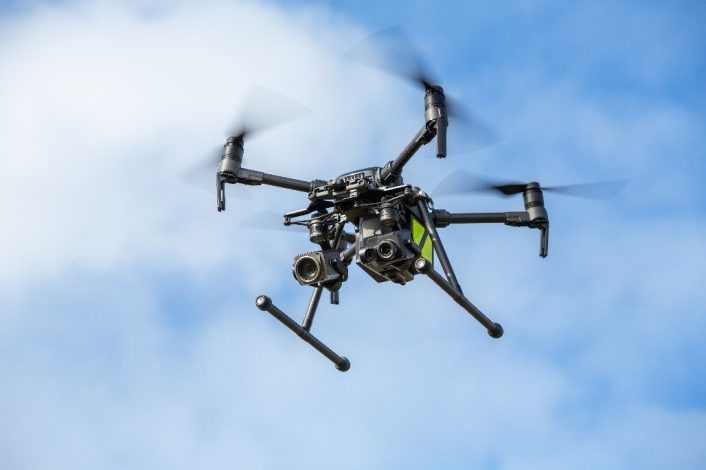
This has led to significant investment into UAS to allow the helicopters to focus on more serious crimes, whilst the drones take up much of the low priority operations such as providing a scene overview for post incident investigations, less major road traffic collisions and aerial imagery to help with event planning.
In this regard, Police Scotland utilises the DJI M210 quadcopter with nine based across Inverness, Aberdeen and Glasgow, where they are deployed from specialist police 4×4 cars allowing the UAS to launch in some of Scotland’s more remote areas.
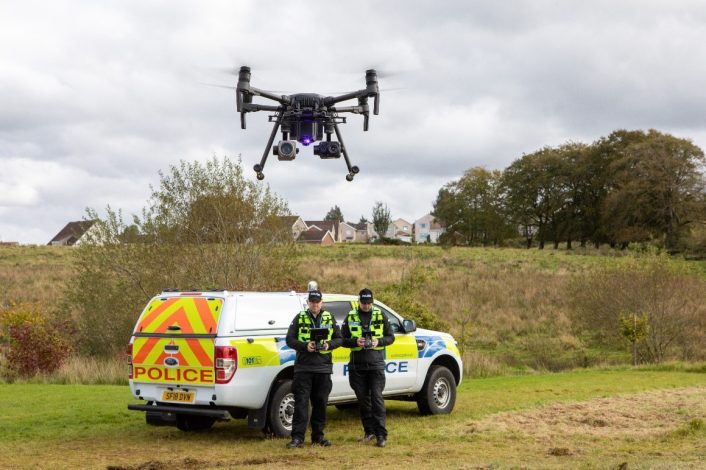
Countless examples from across the UK follow similar trends with dedicated teams using UAS that require line of sight to function. However, the MPS DFR program removes this requirement, allowing for more spontaneous responses from drone operators. Yet, they aren’t the only beyond line of sight (BVLOS) drone program currently taking place across the UK.
National Air Police Service (NPAS)
NPAS was formed in October 2012 to amalgamate the air policing units of the 43 territorial police forces in England and Wales, as well as the three special police forces of the British Transport Police, Civil Nuclear Constabulary and the Ministry of Defence Police.

Duplication of effort, training and cost was present as a result of each police force utilising its own aircraft and training structure, and so it was believed that a national approach would better serve the interests of the public. Prior to the rationalisation, British airborne policing had 33 helicopters based around 30 locations, but cost savings have seen this number reduced by a half in ten years.
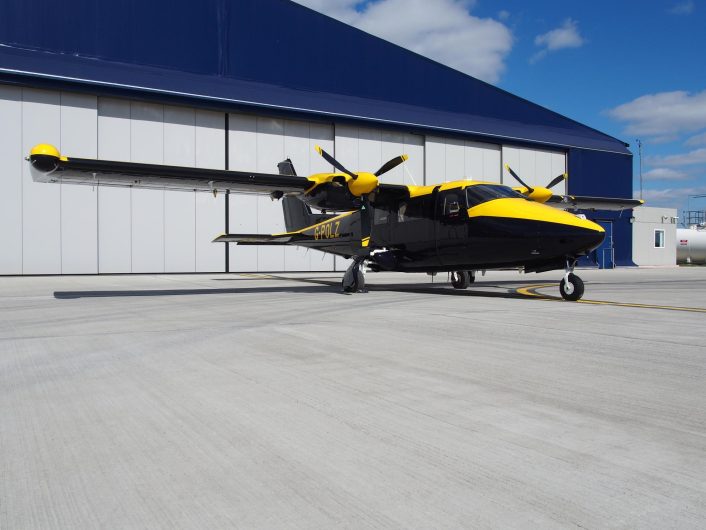
West Yorkshire Police took the lead on NPAS and as a result the service is coordinated from the NPAS Operations Centre, at Wakefield, West Yorkshire. Today they control NPAS operations around 15 different airfields including RAF Benson, providing 15 Airbus H135 and four H145 helicopters and four Vulcanair P68R fixed wing surveillance aircraft.
On Mar. 12, 2025, Airbus was awarded the contract for seven replacement H135 helicopters to renew the current fleet of aircraft, as many are beginning to reach the end of their service life.
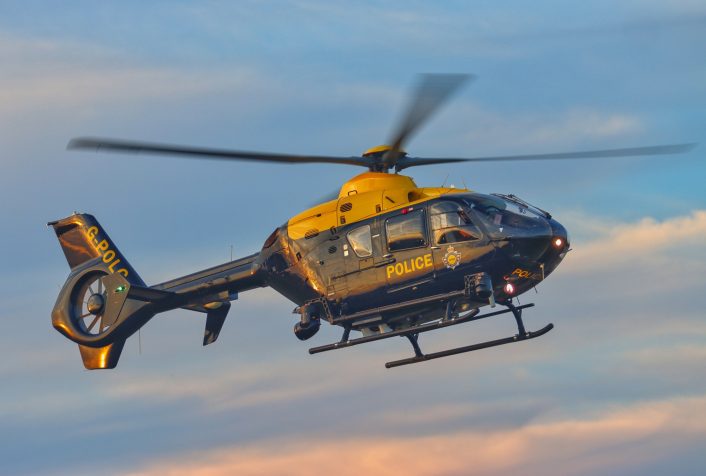
This is not a revival of NPAS, and instead other measures are being explored to expand the service, including the exploration of unmanned systems. On Aug. 3, 2025, NPAS introduced the Beyond Visual Line of Sight (BVLOS) UAS program, to trial unmanned helicopters in the policing role, to allow for a reduction in costs, whilst maximising NPAS ability to provide the UK’s police forces with airborne surveillance.
The BVLOS program centres around the Scheibel S-100 Camcopter, used by multiple military and defence organisations around the world. The S-100 needs no prepared area or supporting launch or recovery equipment, allowing it to take off and land practically anywhere.
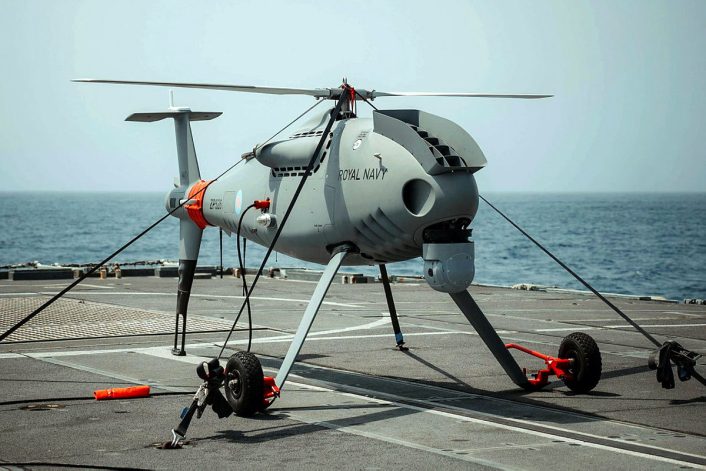
It operates at day and night with a range out to 200km, which greatly exceeds the ranges of previous UK police UAS. In addition, it can either navigate via pre-programmed GPS waypoints, or it can be controlled directly by an operator which is currently how the trials are being conducted. The Royal Navy has been testing its own version, named the Peregrine, currently deployed on Type-23 frigate HMS Lancaster in the Persian Gulf.
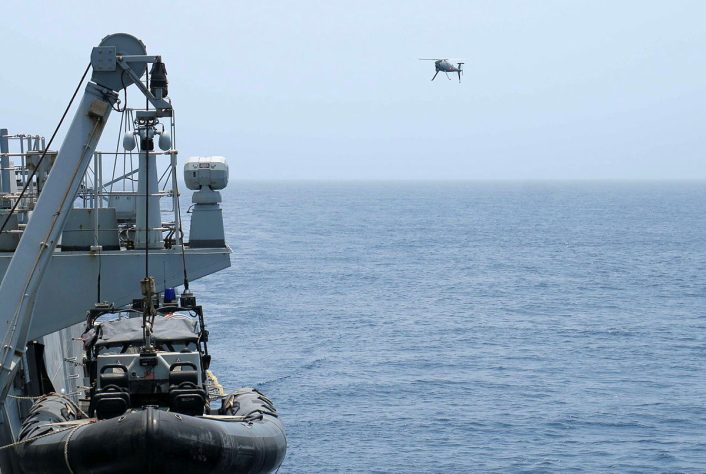
For NPAS, the S-100 provides similar benefits to the MPS’ DFR program, although in a greatly expanded way, as it could allow NPAS to increase its reconnaissance capabilities without the expansion of its manned aircraft fleet. Yet, the S-100 is not as fast as its manned cousins, meaning that a blended approach of manned and unmanned aircraft is needed to fulfil all of NPAS’ capability requirements.
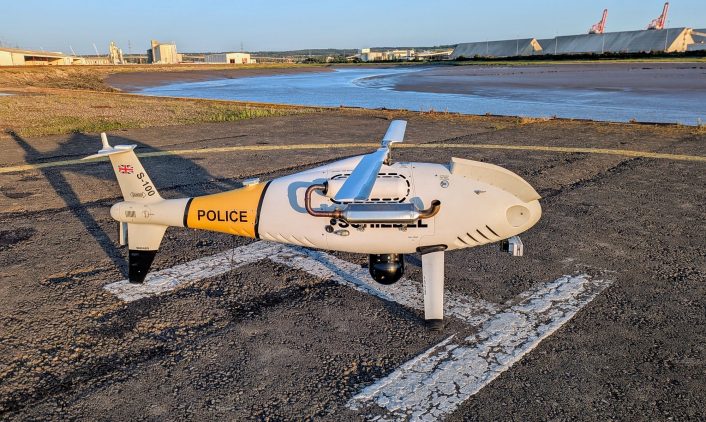
Neil Hunter, Head of Global Sales at Schiebel said:
“We are extremely proud to support the UK National Police Air Service in their evaluation of BVLOS using the unrivalled S-100. Its proven performance, flexibility and ability to deliver real-time intelligence and surveillance using powerful high resolution sensors will deliver a powerful advantage in law enforcement missions across the UK”.
The current trial tests the S-100’s thermal camera and its ability to integrate with police and other emergency service partners in action. Tests currently are restricted to segregated airspace above Avonmouth Port with no other aircraft allowed in the vicinity due to safety concerns. They additionally take place at night time to prevent disruption to the general public.
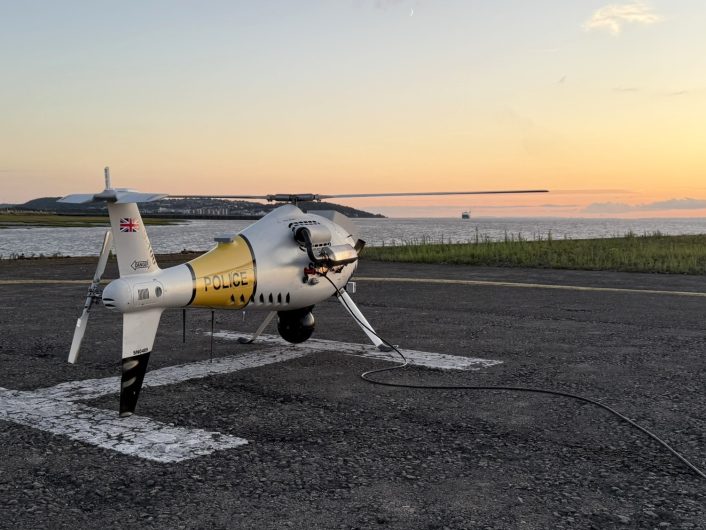
As of Oct. 7, NPAS has gained Civil Aviation Authority permission to expand the testing campaign, allowing the S-100 to test its ‘detect and avoid’ ability and enter unsegregated airspace for the first time. Similarly to the RAF Protector RG1, the S-100 must pass tests to be allowed to operate in civilian airspace, due to the possibility of causing mid-air collisions with civilian aircraft owing to the restricted view of the operator.
‘Detect and avoid’ technology is vital here, with the Protector being the first of its kind in the UK. Perhaps an NPAS S-100 could soon become the second such use case.
We are delighted to be supporting NPAS in this hugely exciting and innovative project!
This represents another opportunity to demonstrate how we can integrate drones of all types into UK airspace safely, sustainably and at scale. 🌐 https://t.co/bdpK4tJt7L
— NATS (@NATS) August 4, 2025
So far, NPAS has logged more than 90 hours of flights, with a single 4.5-hour flight covering 297km of ground, highlighting the S-100’s ability to stay in the air for a long period of time. In fact, the H135 and H145 are currently limited to up to 2 hours of flight time, so the S-100 offers a significant advantage in this regard.
In November 2025, NPAS will test the S-100’s ability to integrate with mountain rescue teams to inform future strategies regarding UAS use. If successful NPAS will likely move towards a blend of all three different aircraft types, with the fixed wing element providing long endurance surveillance, the helicopter providing the ability to track high speed pursuits, whilst UAS could support the bulk of NPAS operations.
The idea of using only UAS is a whole other world away, although this does provide an interesting glimpse at a possible future for police UAS operations in the UK.

